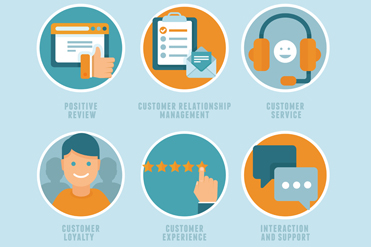

Much has been written about digital marketing, and how it represents a radical departure from traditional advertising. While the landscape has certainly changed in the age of the internet, many age-old fundamentals remain. Relationships, for instance, are as important as ever.
Criticizing our digital age for its lack of depth has become a bit of a cliche. True, some people prefer to communicate on their phones rather than in person, and yes, many business’ relationships with its customers are now formed virtually. But that doesn’t mean those relationships are any less important. While face-to-face interaction will never lose its value, 81% of consumers will seek out a brand online before visiting a store or calling for information. They simply want to gather data on their terms in order to make a smarter buying decision.
These days the business-consumer relationship is a two-way conversation, which is actually great for brands. As in life, relationships tend to grow stronger when both parties have a say. By letting your customers participate in the buying process, they become more invested in your brand.
Of course, the trick is designing your marketing plan around this idea. To be successful, here are a few things to consider.
(And to see how Spinx can help create and convert customer relationships for your business, check out our services page).
Non-linear customer track
The concept of the traditional sales funnel may never become irrelevant, but marketers now think of it as more of journey. Rather than the old, linear model based on structured, distinct stages, consumers now prefer to interact with a brand on their own time. Advertising is still effective, but it has to compete with user-generated customer reviews, posts on social media, fan videos and more. The opinions of others are just as important, if not more influential, than a company’s banner ads and commercial videos.
The goal, then, is to make sure you influence the conversation about your brand as much as possible. Obviously, you can’t control everything said about you online, but with a savvy reputation and social media plan, you can become amenable to the interactive model of consumer-brand engagement.
The importance of personalization
A tried-and-true key to success in marketing is simply remembering a person’s name. It shows that you took at least a few seconds to focus on him or her. The same principle applies in digital marketing. In fact, in a poll conducted by Responsys, studies found that 53% of people are more likely to make a purchase when digital communications are personalized.
Despite the supposedly superficial connections people make online, we clearly respond to brands that address us individually. You can still effectively reach people through email, social media and more as long as you treat them as a person, and not just another lead. It may be tempting to use the internet as an affordable way to reach a mass audience (indeed, you should use it for that), but don’t forget that that large pool of consumers is comprised of real people.
So now that we’ve covered how the interactive model works, let’s look at some of its benefits.
Benefits of two-way digital conversation:
Customer feedback
Customer feedback in the age of digital marketing can be a scary proposition. Allowing people to open up about their experience with your brand on Facebook or in a comments section of a YouTube video may not always result in the flattering review you want, but marketers should covet this information. Even less-than-glowing comments can provide insight into how to improve the customer experience for others.
Additionally, it lets you interact with people in real – or only slightly delayed – time. If someone sends a complimentary tweet your way, you can respond with thanks or comment. Similarly, if users take to social media to complain about poor service, you can acknowledge their grievances and try to solve the problem. From a public relations standpoint, this is a huge benefit as it allows your online audience to see that you care about your customers.
Real-time sales
Many businesses now use apps to enhance their sales. While loyalty apps reward repeat customers, others use geo-targeting services aimed at addressing customers in real time, depending on their location. (Of course, these are ideal for any business with a brick-and-mortar store). People download your app, signaling their interest in your brand, set their location preferences, and the app can then send them targeted discounts and deals when users are in the range of the store. This is a great way to address people’s needs at the moment.
Customer tracking
The self-driven process of engaging with a brand can actually help target more promising leads. Think of it this way. A user visits your website, maybe checks out a few pages, and then leaves and browses other sites. Meanwhile, through professional retargeting services, you can track which websites he visits and target your ad presence accordingly. He’s already displayed interest, and now you can gently remind him of your brand later on by displaying your banner ad or video. Both consumer and brand benefit in this scenario. The brand gets a more focused lead, and the consumer gets to decide if he wants to further engage or not.
The post How to leverage Customer Relationships in the Digital Era first appeared on Web Design & Digital Marketing Tips.